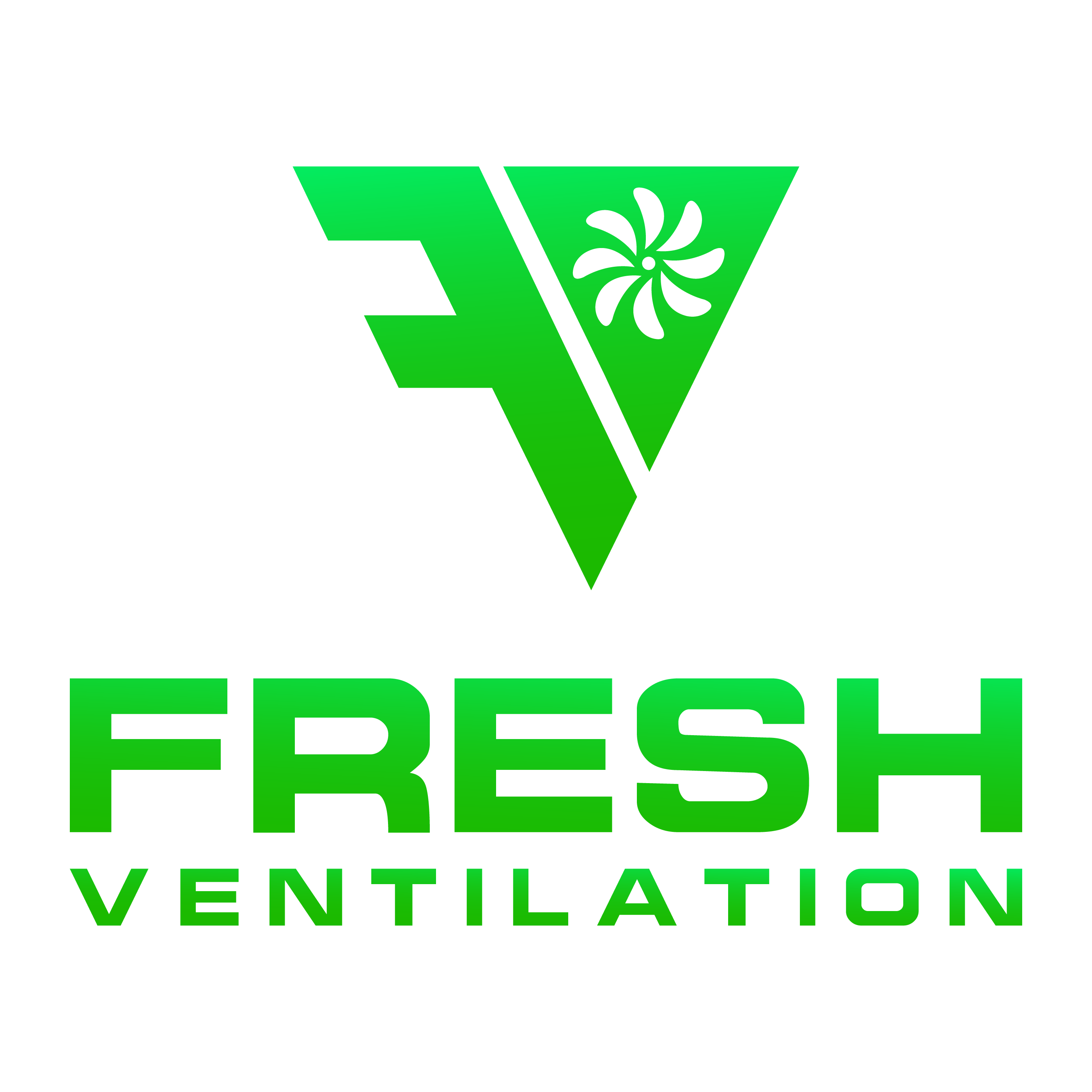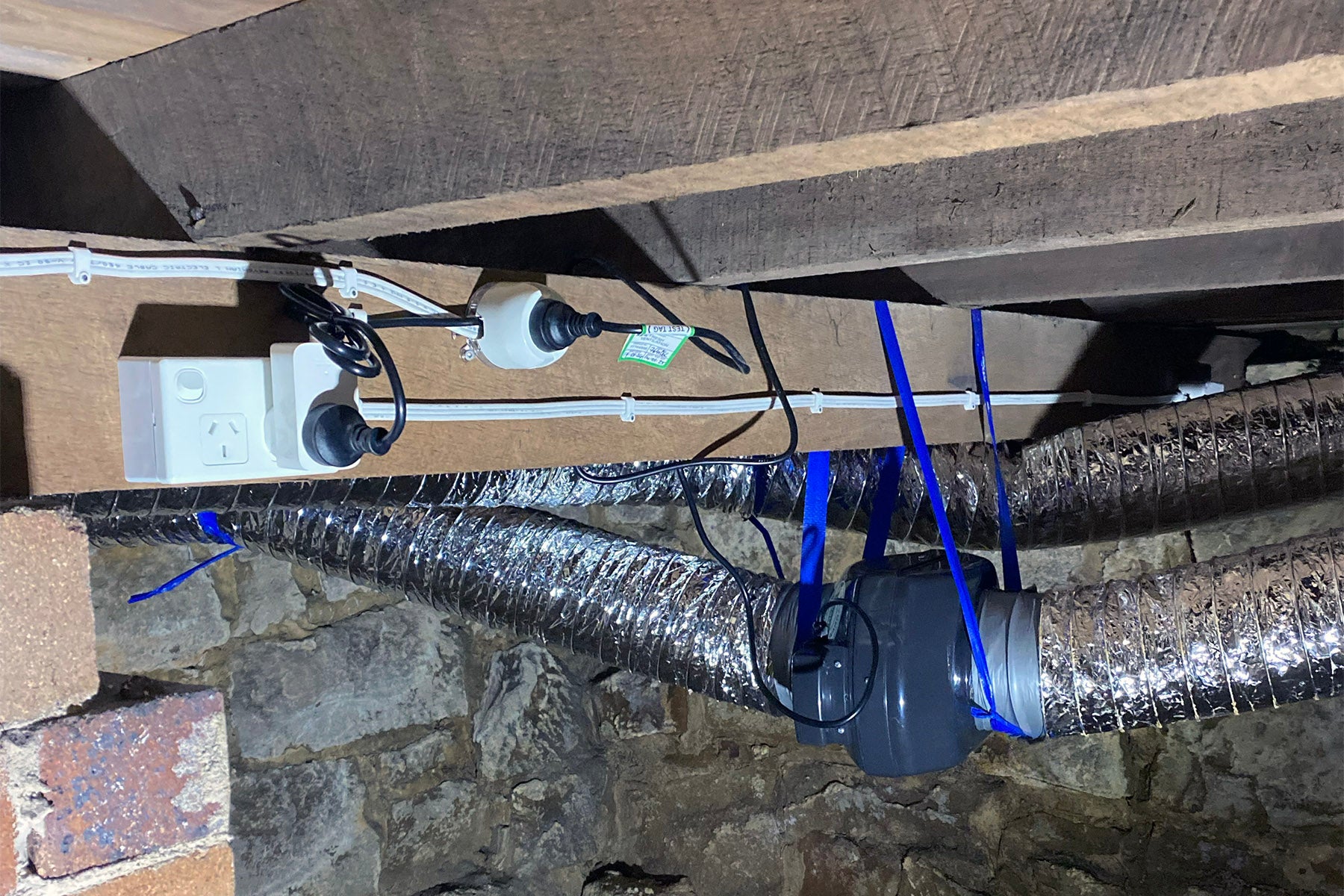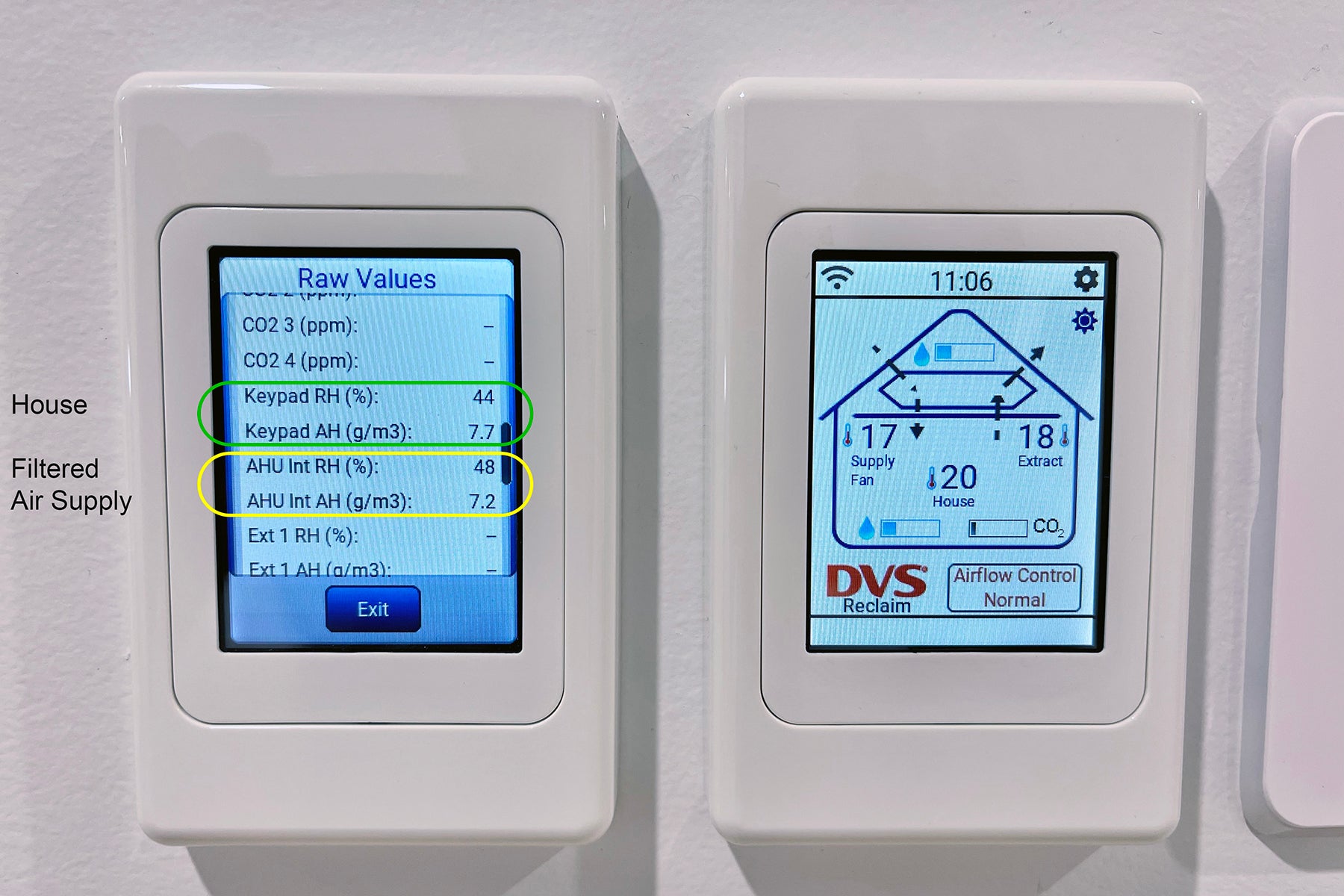As homeowners become increasingly aware of the importance of energy efficiency and indoor air quality, heat recovery ventilation systems (HRV) have gained prominence. At Fresh Ventilation, we often encounter queries from clients about the best HRV system for their homes. Our product range includes:
- the DVS EC Reclaim Connect from DVS New Zealand;
- the complete range of STIEBEL ELTRON ventilation products;
- the complete range of Zehnder ventilation products, including the ComfoAir Q350, ComfoAir Q450 and ComfoAir Q600; and
- the complete range of LUNOS decentralised ventilation products.
We regularly get asked why we use and install "so many competing ventilation products". The answer is, because we don't see these products as competitors to each other. What is a perfect fit for one home, fundamentally will not work in another home. In fact, for over 70 percent of the quote requests we get for STIEBEL ELTRON, it's not actually possible to install a STIEBEL ELTRON system! Each of these systems has its unique features, making them suitable for different types of homes and needs.
Understanding Heat Recovery Ventilation Systems
Before delving into specific products, it's crucial to understand what an HRV system does. These systems are designed to provide fresh air to your home while conserving energy. They work by extracting stale air from inside your home and using its heat (or coolth) to warm (or cool) the incoming fresh air. This process ensures a constant supply of fresh, filtered air, improving the indoor air quality, preventing humidity related problems such as mould and condensation, and reducing heating and cooling costs.
Choosing a Heat Recovery Ventilation System
What is a perfect fit for one home, fundamentally may not work in another home. When choosing between our systems, it’s crucial to understand the nature of your home:
- Home Type and Construction: New, high-performance homes that are aiming for Passive House certification will need a Zehnder system. These systems are typically integrated into the original architectural design to ensure that installation is possible and the required ventilation can be achieved. New homes that are considerably more airtight than our construction standards require can consider both the Zehnder and STIEBEL ELTRON range of products. It's important to understand the requirements of installation, as often it's not possible to install these systems if they haven't been allowed for during the design. For older homes or more typically constructed new homes, the DVS EC Reclaim Connect is a more suitable and feasible option. Lastly, decentralised ventilation products can be installed in any home, but given the numerous advantages offered by centralised systems, we find they tend to be installed in recently constructed homes, where indoor air quality problems have arisen, but ventilation wasn't considered (or was omitted) at the time of design and building. Decentralised ventilation products are also ideal for apartments, or for homes where only one room is suffering from air quality problems.
- Budget and Investment: While the DVS is more budget-friendly, especially for retrofitting, the STIEBEL ELTRON and Zehnder systems represent a significant investment but are essential for certain high-performance builds. Decentralised ventilation covers a wide price range - it can be at the cheapest end of the scale for apartments and single-room solutions, but also the most expensive end of the scale for whole house retrofit solutions when centralised ventilation is no longer possible to install.
- Installation Requirements: The feasibility of installation varies significantly between these systems. The DVS and decentralised products offer greater flexibility and ease when retrofitting, while the STIEBEL ELTRON and Zehnder systems demand early integration into the home's design and structure.
DVS EC Reclaim Connect: The Retrofit Solution
For most existing homes or standard to above average new builds, the DVS EC Reclaim Connect is the go-to choice. Unlike the STIEBEL ELTRON and Zehnder systems, which are tailored for high-performance newly constructed homes, the DVS system is adept at retrofitting into existing structures.

Why Choose DVS?
- Designed to be Installed Outside the Thermal Envelope: The DVS is designed specifically to be installed outside the thermal envelope. This means it can be located inside a standard pitched roof, or even a subfloor space. It uses high quality insulated ducting and components to maximise the efficiency of the system. While it is less efficient than a STIEBEL ELTRON or Zehnder system housed entirely inside the thermal envelope, it outperforms both if they were to be installed outside the thermal envelope. The DVS EC Reclaim Connect allows efficient centralised heat recovery ventilation to a wide range of home types where previously it was unavailable.
- Ideal for Retrofitting: Designed specifically for installation in already built homes, the DVS is a practical solution for most homeowners, avoiding the need for extensive alterations.
- Quality Components: Matching the Zehnder range in component quality, it includes efficient EC motors from ebm-papst, a high-performance Recair Sensitive heat exchanger, and a Wi-Fi connected controller with automated temperature, humidity and CO2 monitoring.
- Flexible Installation Locations: Capable of being installed in roof cavities or subfloor spaces, the DVS offers unparalleled adaptability.
- Cost-Effectiveness: It presents an affordable entry into heat recovery ventilation, suitable for a wide range of home types.

STIEBEL ELTRON and Zehnder: For High-Performance New Builds
When it comes to high-performance new homes, especially those adhering to or nearing Passive House standards, the choice isn’t as much about preference as it is about necessity. The STIEBEL ELTRON and Zehnder systems are engineered for such environments. Their integration into the home's design is not just ideal but essential for achieving the desired performance.

Key Features of STIEBEL ELTRON and Zehnder Systems
- Integration into Home Design: These systems need to be considered from the onset of the building design. They require specific architectural features like provision of space inside the home for mounting the unit and attenuator boxes, and service cavities inside the thermal envelope for concealing ducting (a false ceiling or extensive bulkheads).
- Must be Installed Inside the Thermal Envelope: Heat recovery ventilation systems from STIEBEL ELTRON and Zehnder must be installed inside the thermal envelope. This means every part of the system must be inside the thermal envelope, which usually means housing the unit and attenuator boxes in a laundry cupboard, and allowing for a false ceiling throughout to act as a service cavity for the ducting. These systems use small-diameter uninsulated semi-rigid pipe which cannot be run through a cold roof cavity. These systems are substantially more expensive than a DVS EC Reclaim Connect, and running duct through spaces outside the thermal envelope requires additional insulation, which adds substantial further cost, while negating any efficiency benefit these systems have from being inside the thermal envelope.
- Optimal for High-Performance Homes: Their placement within the thermal envelope maximises energy efficiency, crucial for homes built to higher efficiency standards.
- Cannot be Retrofitted without Substantial Renovations: The requirement to be inside the thermal envelope makes retrofitting nearly impossible, unless undertaking very substantial renovations at the same time.
- Advanced Technology: The ComfoAir Q Series from Zehnder offers the latest in ventilation technology. These systems are expensive, but offer class-leading performance and features for those who seek the forefront of eco-friendly home innovation.

Decentralised Ventilation: The Retrofit Solution for Modern Homes and Apartments Neglecting Proper Ventilation
Decentralised ventilation consists of multiple smaller ventilation units that are installed in targeted locations throughout a home. Larger decentralised products, such as the LUNOS Nexxt-E, are an all-in-one unit containing a counterflow enthalpy heat exchanger and offer full-time balanced ventilation. Smaller decentralised products, such as the LUNOS e²60, are typically installed in pairs because one unit will extract the dirty or stale air while the other will be tasked with supplying fresh air. The two units tango this task, dancing for about 30 seconds one way then they swap exchanging functions. Co-ordination of this ensemble is controlled with a single controller to make the arrangement user friendly and efficient.
Decentralised ventilation is perfect for apartments and spaces with limited access. It is also popular for retrofit as there’s no need to run ducting. This aspect makes decentralised ventilation an excellent solution to solve immediate room-specific problems such as mould or condensation issues in a bedroom or living area. Decentralised units can be easily fitted without any real structural modifications — a simple hole in the wall install — solving immediate climate issues.

Why Use Decentralised Ventilation?
- Cost-Effective for Small Installations: Decentralised ventilation can be cost-effective when only a few units are needed, making it a practical choice for smaller-scale projects or areas within a larger building that require ventilation.
- Ease of Retrofit: Decentralised ventilation systems are ideal for retrofitting because they can be easily fitted without any real structural modifications — a simple hole in the wall install.
- Simplified Installation: With no need for extensive ducting, the installation of decentralised ventilation systems is simpler and quicker, reducing labour and material costs.
- Heat and Energy Recovery: Decentralised units with heat recovery capabilities can significantly reduce energy loss by capturing and reusing heat (or coolth), contributing to improved energy efficiency and cost savings.
- Adaptability: Decentralised systems are highly adaptable and can be easily scaled or modified to meet changing ventilation requirements as your home evolves.
- Redundancy: Installing multiple decentralised units allows for redundancy, ensuring continuous ventilation even if one unit experiences a malfunction or requires maintenance, which is critical for uninterrupted operation.
- Energy Efficiency: By supplying fresh air directly to the area where it's needed, decentralised ventilation systems can be more energy-efficient than centralised systems, as they reduce the energy losses associated with long duct runs.

Summary
| DVS EC Reclaim Connect | STIEBEL ELTRON | Zehnder | LUNOS Decentralised | |
| Price | $$ | $$$$ | $$$$ - $$$$$ | $ - $$$ |
| Efficiency | ☆ ☆ ☆ | ☆ ☆ ☆ ☆ | ☆ ☆ ☆ ☆ ☆ | ☆ ☆ - ☆ ☆ ☆ ☆ |
| Maintenance | 2 Filters Every 12 Months |
2 Filters Every 6 Months |
2 Filters Every 6 Months |
1 - 2 Filters per Unit Every 3 - 12 Months |
| Passive House Certified | No | Some Products | All Products | Some Products |
| Control | Advanced (Wi-Fi Connected / Firmware Updates / Temperature, Humidity, CO2 and Fan Speed Sensors) |
Basic (Temperature and Humidity Sensors / Manual Bypass Operation) |
Advanced (Wi-Fi Connected / Firmware Updates / Smart Phone App with Remote Monitoring / Temperature, Humidity and Fan Speed Sensors / CO2 Sensors (Optional) / Automatic Bypass Operation) |
Basic to Moderate (Temperature and Humidity Sensors / Manual Bypass Operation) |
| Recommended Installation | Retrofit and New Builds (Normal to Above Average Construction) |
New Builds (High Performance) |
New Builds (High Performance and Passive House Certified) |
Retrofit (Apartments, Small Spaces, and Homes where a Centralised HRV can't be Retrofitted) |
| Warranty | 5 Years | 2 Years | 2 Years | 2 Years |
Conclusion
At Fresh Ventilation, we emphasise that the choice of HRV system is heavily influenced by the type of home you have or plan to build. For the majority of homes, particularly when retrofitting, the DVS EC Reclaim Connect offers a viable, cost-effective solution with excellent performance. However, for new, high-performance homes aiming for top-tier energy efficiency, the STIEBEL ELTRON and Zehnder systems are not just preferable but necessary, requiring early integration into the home’s design to ensure they are able to be installed.
Our expertise lies in ensuring that your home is equipped with the right ventilation system to enhance indoor air quality while optimising energy use. For further guidance or assistance in making the best choice for your home, the team at Fresh Ventilation is always ready to provide expert advice and support.




Leave a comment
All comments are moderated before being published.
This site is protected by hCaptcha and the hCaptcha Privacy Policy and Terms of Service apply.